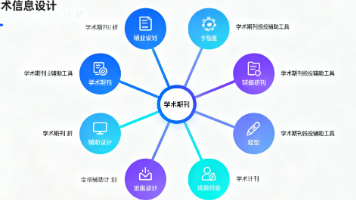Spring AI + Google 简单构建RAG
到这个小demo,完全意识到了Spring AI的不稳定,尽管我在用的是Milestone版本,API和实体类也是换来换去,此时也能感受到模型解决问题的瓶颈,虽然在这个过程中G老师还是能帮助我很多,但是这种比较新的东西确实需要程序员的基本功,锁定解决问题的方向,加以模型的辅助才能比较好的完成问题。我遇到了很多坑,但不是每一个坑都解释在文档里了,我觉得练手可以,起一个这样的项目不是很稳定。环境:运行
目录
前言
到这个小demo,完全意识到了Spring AI的不稳定,尽管我在用的是Milestone版本,API和实体类也是换来换去,此时也能感受到模型解决问题的瓶颈,虽然在这个过程中G老师还是能帮助我很多,但是这种比较新的东西确实需要程序员的基本功,锁定解决问题的方向,加以模型的辅助才能比较好的完成问题。我遇到了很多坑,但不是每一个坑都解释在文档里了,我觉得练手可以,起一个这样的项目不是很稳定。
环境:
运行系统:MacOS
Docker 提前安装好
Spring AI 版本: 1.1.0-M3,因为只有在这个版本下,我的依赖包在国内的Aliyun仓库都有。
Vector DB: chroma,比较简单,适合搭练手项目
Embedding Model: text-embedding-004 by Google,这里也是给自己上难度了,如果有别的API Key 建议不用G家的
Docker 镜像仓库:docker.1ms.run
步骤
RAG简单来说就是让大模型只在限定的向量数据库里找答案。所以建这样一个项目flow主要是:
- 存文本到向量数据库(Injestion):读取资源 - > 资源切块 -> 调Embedding模型 -> 存到向量数据库 (一次性或定时任务)
- 从向量数据库里搜索(search): 用户输入 -> 调用模型Embed输入-> 向量数据库similarity search -> 作为上下文发给LLM -> LLM返回结果给用户
准备Prompt
AI写一个就行,注意这个不是系统提示词,它是一个prompt template,需要根据用户输入和向量搜索结果填充的。和ReAct Agent那种定义执行逻辑的系统提示词是不一样的。
你是一个智能助手。请根据以下提供的【上下文信息】来回答用户的【问题】。
如果你不知道答案,请直接说不知道,不要编造。
【上下文信息】:
{documents}
【问题】:
{input}
Chunking
把文本资源分块,块分的太小,上下文的语义会丢失,块分的太大,embedding之后信息压缩也会比较厉害,查找的相似性就会降低。这里我问过AI 分块一般是模型来分,还是手写代码逻辑来分。
一般来说,建议手写代码逻辑来分,这块很容易想到策略模式,不同的分块逻辑可以有不同的实现。代码可控且比较稳定,同时,省钱啊,token那么贵。
这里不贴代码了,根据你的文本资源组织形式,可以按照换行来分,按照标题字体大小来分,等等。
从这个角度看,需要存起来作为context_knowledge_base的文档,也是需要有比较清晰的组织形式的。
Embedding
Google的Embedding模型是非对称的,这里体现在它存储和查询的embedding是不一样的,从文档可以看出来,有一个TASK_TYPE字段区分对查询问题的embedding,还是对段落进行embedding存储。
这一块模型的选择就给实现上了复杂度,因为其他家都是对称的,查询和存储用的同一个模型,这样这个模型就可以作为为一的Bean,在需要的时候被Spring 注入,完成很多自动化的任务。
显然G家不可以,那么就要根据不同的任务分别注入不同的bean。
@Configuration
public class GeminiEmbeddingConfig {
@Value("${spring.ai.google.genai.embedding.text.options.model}")
private String modelName;
@Bean
@Primary
EmbeddingModel geminiQueryEmbeddingModel(GoogleGenAiEmbeddingConnectionDetails connectionDetails) {
GoogleGenAiTextEmbeddingOptions options = GoogleGenAiTextEmbeddingOptions.builder()
.model(modelName)
.taskType(GoogleGenAiTextEmbeddingOptions.TaskType.RETRIEVAL_QUERY)
.build();
return new GoogleGenAiTextEmbeddingModel(connectionDetails, options);
}
@Bean
EmbeddingModel geminiDocumentEmbeddingModel(GoogleGenAiEmbeddingConnectionDetails connectionDetails) {
GoogleGenAiTextEmbeddingOptions options = GoogleGenAiTextEmbeddingOptions.builder()
.model(modelName)
.taskType(GoogleGenAiTextEmbeddingOptions.TaskType.RETRIEVAL_DOCUMENT)
.build();
return new GoogleGenAiTextEmbeddingModel(connectionDetails, options);
}
}
VectorStore
Chroma Local Setup
直接使用 Docker 运行 Chroma Server, 本地启动一个Chroma服务端。
国内直接从Docker Hub拉取镜像应该会失败,报connection reset什么的,其实就是和Maven Central拉不下来一样,需要一点魔法。我一般都是临时找一个能用的镜像源,比如这次用的以下:
docker pull docker.1ms.run/chromadb/chroma
项目启动之前记得把这个server起起来,本地启动容器就行,我直接在Docker Desktop上点的Run
Connect to Chroma at: http://localhost:8000
Spring 注入Vectore Store
如果是对称模型,只有一个EmbeddingModel bean,Spring可以实现自动注入VectorStore bean里面,结果就是对段落的向量存储甚至不需要显式地调用embeddingModel.embed API, 而是vectorStore.add这个API底层把embedding API的调用过程封装好了。
// 保存到 Chroma (Spring AI 会自动调用 Embedding Model 转换向量)
vectorStore.add(List.of(document));
G家是非对称模型,所以采取的方案是,为VectorStore指定一个model bean注入,要么查询,要么存储。对另一个任务,直接调用底层的ChromaAPI操作,不用上层的VectorStore封装。
因为context一旦存好了,读的操作会比写入更多,所以VectorStore我指定的是查询模型。
@Bean
public VectorStore vectorStore(ChromaApi chromaApi,
@Qualifier("geminiQueryEmbeddingModel") EmbeddingModel queryModel) {
// 这里注入的是“查询模型”
return ChromaVectorStore.builder(chromaApi, queryModel)
.collectionName(COLLECTION_NAME)
.initializeSchema(INITIALIZE_SCHEMA).build();
}
数据存入Vectore Store
在存储的时候,手动调用geminiDocumentEmbeddingModel算出向量,利用更底层的ChromaAPI存进去。
这里的实现是跟着VectorStore.add -> AbstractObservationVectorStore.doAdd -> ChromaVectorStore.doAdd的调用链找到源码参考的。
@Component
public class VectorIngestService {
@Value("${spring.ai.vectorstore.chroma.collection-name}")
private String COLLECTION_NAME;
private static final String TENANT_NAME = "default_tenant";
private static final String DATABASE_NAME = "default_database";
private final EmbeddingModel geminiDocumentEmbeddingModel;
private final ChromaApi chromaApi;
public VectorIngestService(EmbeddingModel geminiDocumentEmbeddingModel, ChromaApi chromaApi) {
this.geminiDocumentEmbeddingModel = geminiDocumentEmbeddingModel;
this.chromaApi = chromaApi;
}
public void ingest(List<Document> documents) {
ChromaApi.Collection collection = chromaApi.getCollection(TENANT_NAME, DATABASE_NAME, COLLECTION_NAME);
if (collection == null) {
throw new RuntimeException("Collection not found: " + COLLECTION_NAME);
}
String collectionId = collection.id();
List<String> ids = new ArrayList<>();
List<float[]> embeddings = new ArrayList<>();
List<Map<String, Object>> metadatas = new ArrayList<>();
List<String> contents = new ArrayList<>();
for (Document document : documents) {
ids.add(document.getId());
metadatas.add(document.getMetadata());
contents.add(document.getText());
embeddings.add(geminiDocumentEmbeddingModel.embed(document));
}
ChromaApi.AddEmbeddingsRequest request = new ChromaApi.AddEmbeddingsRequest(ids, embeddings, metadatas, contents);
chromaApi.upsertEmbeddings(TENANT_NAME, DATABASE_NAME, collectionId, request);
}
}
Vectore Store 数据查询
@Component
public class VectorSearchService {
private static final int TOP_K = 3;
private final VectorStore vectorStore;
public VectorSearchService(VectorStore vectorStore) {
this.vectorStore = vectorStore;
}
public List<Document> search(String query) {
SearchRequest request = SearchRequest.builder().query(query).topK(TOP_K).build();
return vectorStore.similaritySearch(request);
}
}
ChatClient
Rag 的client比较简单,没有系统提示词,也没有工具注册,直接把模型注入就行,我定义个了一个工厂方法
@Bean
public ChatClient ragChatClient(ChatModel chatModel){
return ChatClient.builder(chatModel).build();
}
RagController
Controller里把查询服务注入就可以了,与用户的交互不涉及存储的过程
@RestController
@RequestMapping("/api/rag")
@CrossOrigin(origins = "*")
public class RagController {
private final ChatClient ragChatClient;
private final VectorSearchService vectorSearchService;
@Value("classpath:/prompt/rag_prompt_template.txt")
private Resource ragSystemPromptResource;
public RagController(ChatClient ragChatClient, VectorSearchService vectorSearchService) {
this.ragChatClient = ragChatClient;
this.vectorSearchService = vectorSearchService;
}
public record RagQueryRequest(String question) {
}
@PostMapping("/ask")
public String runRag(@RequestBody RagQueryRequest request) {
List<Document> docs = vectorSearchService.search(request.question());
String context = docs.stream()
.map(doc -> "--- 来源: " + doc.getMetadata().get("source") + " ---\n" + doc.getFormattedContent())
.collect(Collectors.joining("\n\n"));
PromptTemplate promptTemplate = new PromptTemplate(ragSystemPromptResource);
Message systemMessage = promptTemplate.createMessage(
Map.of("documents", context, "input", request.question())
);
return ragChatClient.prompt()
.messages(systemMessage)
.call()
.content();
}
}
我跑了几个HTTP请求,练手流程是跑通了,现在更新的技术应该是GraphRAG,可以保留向量之间的关系,所以就不深究RAG项目了。
参考文档:
- Embedding Models: https://docs.spring.io/spring-ai/reference/api/embeddings.html
- Google Embedding Implementation: https://docs.spring.io/spring-ai/reference/api/embeddings/google-genai-embeddings-text.html#_using_gemini_developer_api_api_key
- Vectore DB Chroma: https://docs.spring.io/spring-ai/reference/api/vectordbs/chroma.html
更多推荐
 已为社区贡献3条内容
已为社区贡献3条内容









所有评论(0)